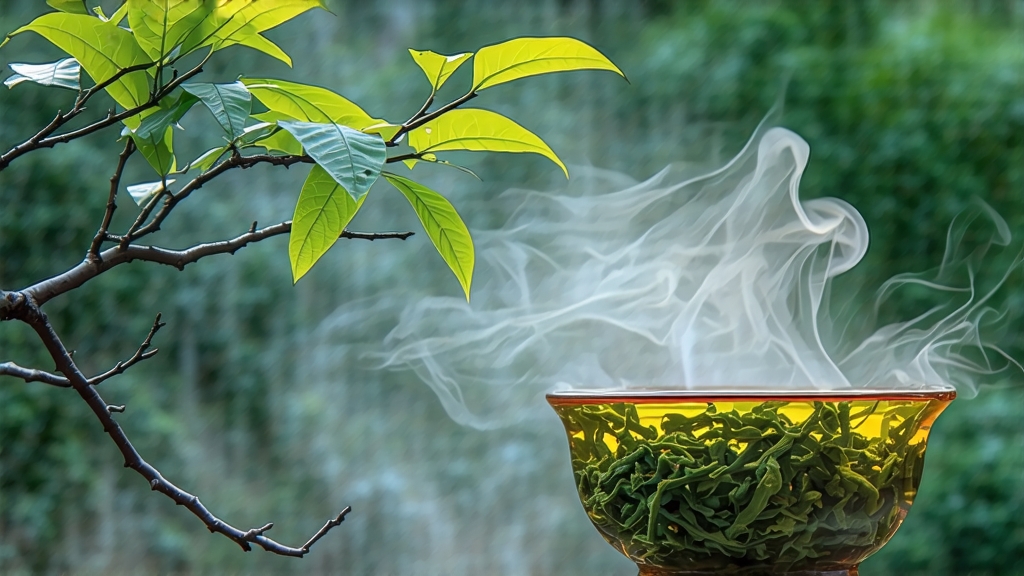
Tieguanyin, literally “Iron Goddess of Mercy,” is the most celebrated among China’s oolong teas, a bridge between green freshness and black depth. Born in Anxi County, southern Fujian, its story blends myth, monkish devotion, and centuries of market cunning. Locals still recount how the 18th-century farmer Wei Yin, a pious Buddhist, dreamt of Guanyin pointing to a hidden shrub behind his rammed-earth house. Upon waking he found a stunted tea tree whose leaves, once plucked and half-fermented, released an orchid aroma so haunting that villagers swore the goddess herself had tempered the leaf with compassion. Whether legend or savvy branding, the name stuck, and Tieguanyin became the county’s spiritual cash crop.
Anxi’s microclimate is the first secret. Granite peaks trap maritime fog; nights stay mild, days bright, and the red-yellow lateritic soil is laced with just enough acidity to coax slow, amino-rich growth. Five distinct seasonal harvests—spring, spring tail, summer, autumn, and winter—each stamp the leaf with a different emotional register: spring tender and lyrical, winter mineral and withdrawn. Purists prize the Qingming-spring pick, when two-and-a-half leaves still hold the winter’s stored sugars, yet the bud’s tip is tight as a pearl.
Unlike green tea, Tieguanyin is not fixed in its own juice; unlike black tea, it is not fully oxidized. Instead it undergoes a meticulous 24-hour choreography known as “qing gong.” Picking starts at dawn when dew still beads the serrated leaf edge. Sun-withering follows: the leaves are spread on bamboo mats for twenty minutes of gentle bruising under infrared-rich morning light. This initiates enzymatic browning while preserving chlorophyll’s jade heart. Workers then toss the leaves in waist-high bamboo drums, rhythmically shaking them so edges rub against veins. The bruises redden, but the center stays green—an intentional “green heart with red skirt” that defines authentic Tieguanyin.
Oxidation is arrested at 30–50 % by a 280 °C tumble in electric woks. The master’s wrist decides: too short, the tea tastes grassy; too long, it collapses into black-tea heaviness. Next comes rolling and compression, first by machine, then by foot on a rattan-wrapped stake, a ballet that twists leaves into compact hemispheres looking like dragonfly eyes. A final low-temperature bake, sometimes over charcoal of longan fruit wood, coaxes out toasted nut notes that marry with lingering florals. The entire cycle repeats up to three times, each bake lighter than the last, layering aroma the way violin varnish builds tone.
Modern market forces have splintered Tieguanyin into stylistic siblings. Traditional “nong xiang” (heavy aroma) versions endure 36-hour charcoal baking, yielding amber liquor, cocoa and dried-fruit sweetness, a warming cup for Chaozhou merchants who once drank it while tallying opium ledgers. At the opposite pole lies “qing xiang” (light aroma), a 1990s innovation aimed at urban millennials: minimal oxidation, quick electric bake, jade-green leaf, lily-white infusion, and a top note of fresh gardenia. Between them sits “yun xiang” (rhyme aroma), a compromise that keeps the green center yet adds a 6-hour charcoal finish, prized for a lingering “yun” or throaty echo that poets compare to temple bells after rain.
To unlock these narratives in your own kitchen, equip yourself with a 120 ml gaiwan, a fairness pitcher, and three tulip-shaped aroma cups. Use 6 grams of leaf—about two heaping teaspoons—for the gaiwan’s dense porcelain walls concentrate heat without scorching. First rinse at 95 °C for three seconds; discard immediately to awaken the compressed leaf. Subsequent infusions start at 10 seconds, adding five each round; a quality Tieguanyin yields eight to ten brews, each revealing a different act: the opening floral overture, a second-act creaminess, a mineral third act, and a final honeyed curtain call. Water matters: TDS around 30 ppm, pH 7, and never distilled; the tea needs minerals to polymerize aromatics into volatile clouds.
Tasting is multisensory. Observe the dry leaf: tight pellets should feel heavy, like tungsten beads, and